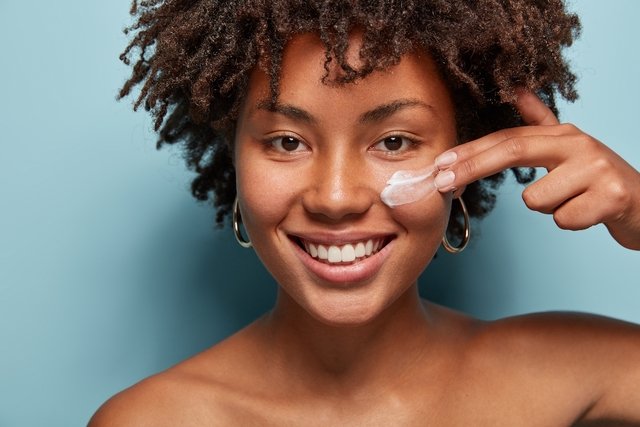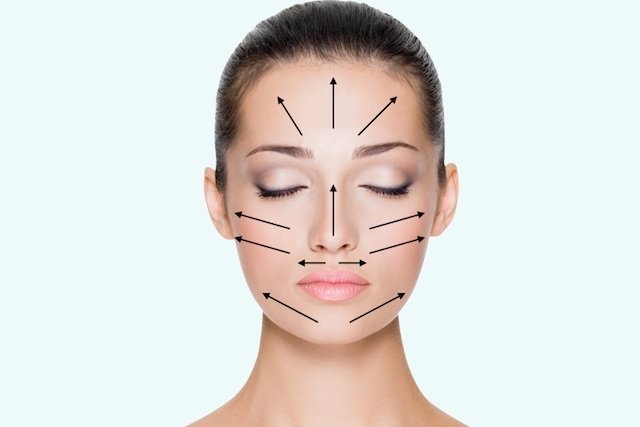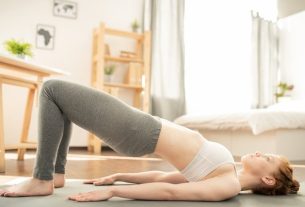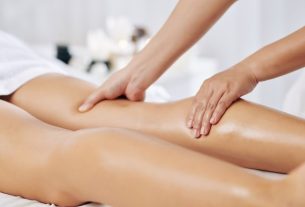Sagging creams are those that contain ingredients that help give firmness and support to the skin. They may contain, for example, DMAE, hyaluronic acid or vitamin C, which stimulate collagen production and help keep the skin nourished, minimizing the appearance of cellulite and improving its appearance.
Skin sagging is a slow and progressive process, which affects both men and women, and begins after the age of 25, as it is at this age that there is a reduction in the production of collagen fibers. There are some factors that can accelerate the skin sagging process, such as: smoking, sedentary lifestyle, pregnancy, obesity, weight loss in a short period of time and excessive exposure to the sun.
To prevent sagging skin, it is recommended to use facial and body creams that help firm the skin and minimize the effects caused by time, always combined with physical exercise, a protein diet and avoiding excessive exposure to Sun. See how to eat a high-protein diet.

Main ingredients against sagging
The best creams to treat flaccidity should have some of these ingredients in their composition:
- Vitamin E: helps fight free radicals, which are responsible for skin aging;
- Vitamin B: has anti-inflammatory and healing action, in addition to increasing the skin’s natural resistance;
- Vitamin C: has a high antioxidant power, stimulates collagen production, combats premature aging and helps to brighten and lighten the skin;
- Hyaluronic acid: helps enhance the anti-wrinkle action of Vitamin C, reducing expression lines and promoting deep, long-lasting hydration for all skin types, especially sensitive skin. When choosing the product, you should opt for low molecular weight hyaluronic acid, as it penetrates deeper, reaching the second layer of the skin;
- DMAE: It has a powerful firming effect on the skin, as well as promoting deep hydration and minimizing the effects of cellulite. This substance increases collagen production and acts directly on the muscle, increasing its tone, providing a natural lifting effect;
- Collagen: has an emollient, moisturizing action and provides firmness and support to the skin, preventing the appearance of stretch marks, wrinkles and expression lines, as well as being essential for promoting the health of hair and nails;
- Retinoic acid: also known as tretinoin, it helps eliminate stretch marks, improves the quality of collagen and increases its production, making the skin firmer. Furthermore, retinoic acid also promotes cell renewal, improving the appearance of the skin;
- Caffeine: It helps activate blood circulation, due to its vasoconstrictive and decongestant action and also strengthens blood vessels, reducing their permeability. Furthermore, this active ingredient has antioxidant action, which helps combat skin aging;
- Coenzyme Q10: also known as ubiquinone, it has antioxidant properties, helping to protect the skin from free radicals and sun damage, as well as stimulating collagen production and firming the skin;
- Organic silicon: contributes to the synthesis of collagen, elastin and hyaluronic acid, also exerting a regenerating and restructuring action on the skin;
- Urea: increases skin hydration, maintaining skin integrity and combating premature aging, especially in dry and sensitive skin;
- Argireline: promotes a Botox effect, being a non-invasive alternative to botulinum toxin, reducing expression lines and leaving the skin more uniform. It is known for causing a “cinderella” effect, as after application, the product lasts, on average, a few hours on the skin.
To observe the effects on the skin, it is important that the chosen cream contains one or more of these ingredients in its composition and that it is used according to the skin type.
How to use creams correctly
Flaccidity creams can be used once a day, both when applied to the face and body, without the need to remove them afterwards.
It is recommended to wash your skin with water and neutral soap before applying the cream and exfoliate twice a week, so that the product penetrates the skin better. However, the way to apply may vary depending on the location:
On body
To use sagging creams on the body, it is recommended to carry out movements that help the product to penetrate in the best way, therefore, making movements from the bottom to the top, for example, from the knee to the groin can help to achieve a better effect.
In the face
When using creams on the face, the ideal is to apply the product from the inside out, respecting the facial muscles, as they can help stimulate the skin and provide a longer lasting effect of the cream.

Sunscreen to combat sagging
In addition to creams, sunscreen is considered the greatest ally against sagging, as it combats skin aging, as well as helping to alleviate expression lines and protect the skin against UVA and UVB rays. Sunscreen can also protect against blemishes on the face, improve skin health and reduce the risk of developing skin cancer.
Therefore, the use of sunscreen is essential, regardless of whether or not you use creams, and should always be applied after any treatment and reapplied every 3 hours. See how to choose the best sunscreen for your skin type.
Other treatments for sagging
Aesthetic treatments such as radiofrequency, carboxytherapy and electrolipolysis are also great options for improving the existing collagen structure in the skin, and contributing to the formation of new collagen and elastin fibers, which provide firmness and support to the skin.

Sign up for our newsletter and stay up to date with exclusive news
that can transform your routine!
Warning: Undefined array key "title" in /home/storelat/public_html/wp-content/plugins/link-whisper-premium/templates/frontend/related-posts.php on line 12
Warning: Undefined array key "title_tag" in /home/storelat/public_html/wp-content/plugins/link-whisper-premium/templates/frontend/related-posts.php on line 13



